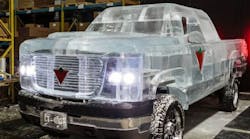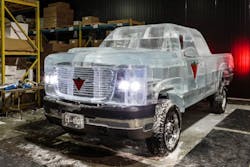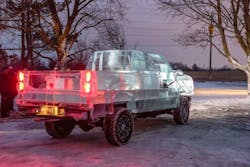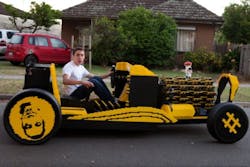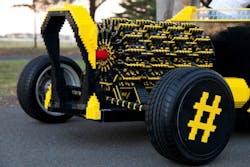The recent outdoor match-up between the Detroit Red Wings and the Toronto Maple Leafs was noteworthy not just because it hosted the largest attendance for a hockey game (105,491). Canadian TV viewers of the game also got to see the debut of a pickup truck whose body was made completely of ice.
The pickup appeared in a commercial for car batteries made by Canadian Tire. The battery maker commissioned Iceculture Inc., an ice sculpture house, to create the 11,000-lb. ice body. According to Canadian press reports, the base of the vehicle was a 2005 Chevy Silverado 2500 HD frame stiffened up by Bronson Line Automotive of Zurich so it wouldn't flex and crack the ice body. Workers there also installed a steel frame to hold the ice panels.
Also in the news recently is a vehicle made almost entirely of Lego blocks. Its creators admit that the load-bearing parts are made of sturdier stuff. The roadster was created by a 20-year-old Romanian tinkerer named Raul Oaida who was bank-rolled partly by a group in Australia and partly through a Kickstarter campaign.
We tried to contact Mr. Oaida to get a few details about the construction of this vehicle but he did not respond. Based on information available on the project web site in a pod cast the group made, the vehicle gets its propulsion from four orbital engines driven from an air tank. Each engine contains 256 pistons, or 64 per Lego engine block.
The Lego roadster has been driven at least once when it hit a top speed of 25 kph (about 15.5 mph). The group claims the top speed should be about 40 kph (about 25 mph) but they don't want to press their luck trying to get it going that fast.
